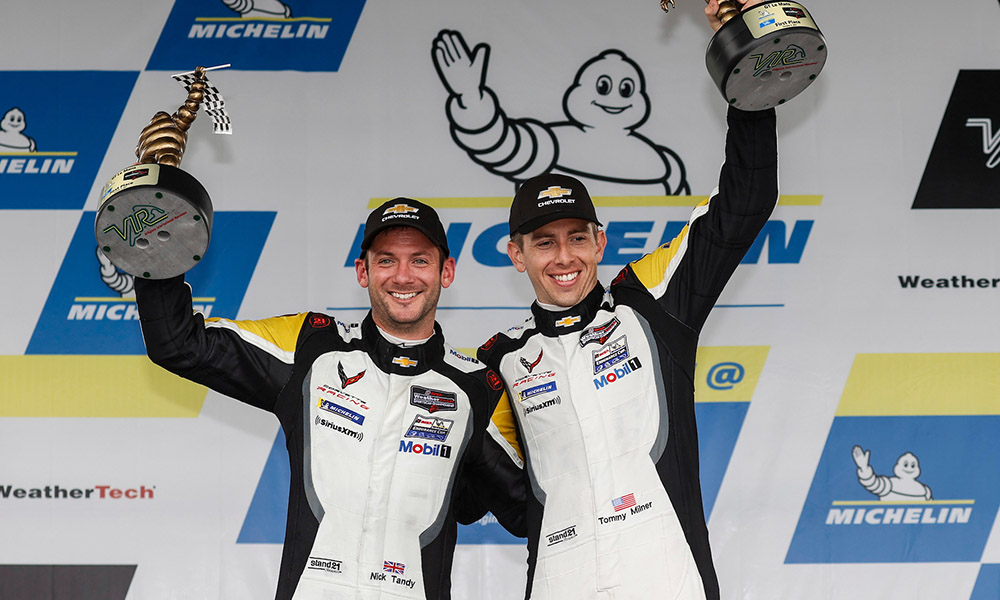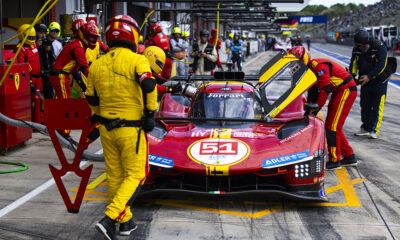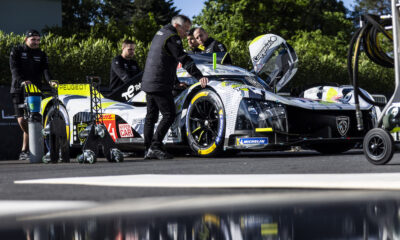
Photo: Mike Levitt/IMSA
Corvette Racing driver Tommy Milner believes that the team will not encounter any significant drawbacks from having to contest the majority of the FIA World Endurance Championship campaign with a two-man driver crew.
Milner and Nick Tandy are on the eve of Corvette’s first full world championship campaign after the team previously contested a couple of standalone events with the mid-engined Chevrolet Corvette C8.R at Circuit of The Americas in 2020 and Spa-Francorchamps last year.
Teams in WEC’s GTE-Pro category run two-driver crews for the majority of the regular six-hour championship rounds, with the 24 Hours of Le Mans being the main exception.
At the eight-hour rounds, teams can opt to bring in third drivers. Porsche utilized that option at Portimao and Bahrain in 2021, but teams consisting of two drivers are considered the norm for the class.
In previous years, Corvette Racing has typically brought in third drivers for the longer endurance races, both at Le Mans and in the IMSA WeatherTech SportsCar Championship.
This will be different for the WEC campaign, which kicks off with next month’s 1000 Miles of Sebring.
While Milner recognizes the challenge that the Sebring season opener will present to the team, he stated that he is not concerned of tackling the race with one co-driver instead of two.
“It’ll probably be about the same driving as it has been in the past with a little bit of a shorter race,” he said.
“Obviously, Sebring is tough physically and mentally. From my point of view, I’ve found that the more driving you do in a race, the more comfortable you get.
“You have more time to really understand what the car needs from every lap and every corner to figure out how to get the most out of the car. Not that I don’t like driving with multiple drivers. For 24-hour races, it’s a necessity.
“But there have been times at some Sebring races – while for 12 hours having only two drivers would be difficult – it’s a situation where at the end of the race and when it’s all over, the ones I’ve done quite a bit of the driving, you are tired for sure.
“But there is a sense that you had every opportunity to maximize the potential of the car.
“I’ve always enjoyed the races where, for whatever reason with the way the drive times worked out, I drove a lot of the race.
“There is a sense of accomplishment at the end of it all where you feel like you’ve had a big role in the performance of the car, and you feel like you get the most out of it.
“From that point of view, I’m excited about that challenge. There’s nothing extra special; it’s business as usual with what I’ve done in the past with training has always worked well for me. I’m continuing on that path as I always have.”
Milner is one of the team’s most experienced drivers, having been on the manufacturer’s roster since 2011.
However, with most of his racing experience coming from competition in the U.S., he expressed confidence at the challenge at hand, but also acknowledged that he will have to work to get acclimatized to some unfamiliar venues on the WEC schedule.
“For me, I think the biggest challenge will fundamentally be getting used to new racetracks and getting up to speed,” Milner said.
“Our competitors will have had quite a bit more experience than I have at these tracks. That, for me, will be the
biggest challenge – finding the maximum out of the car and getting the most out of the car on these new tracks.”
In that regard, co-driver Tandy hinted at a big upside for the two-man tandem: a significant increase in the amount of time available behind the wheel for both drivers.
“From a strategic point of view, when you have only two drivers you get more time, like in practice,” he said.
“You don’t just have more driving time in practice. With things that you’re testing in free practice, you don’t have to worry about changing drivers as much.
“There is a strategic advantage to having less drivers a lot of the time. You can get through more work in practice.”
The 37-year-old Brit, set for his first full WEC campaign since 2017, also pointed towards Corvette’s habit of fielding two drivers in the Watkins Glen Michelin Endurance Cup round, which like most WEC events is a six-hour contest.
“Of course, when it comes to the actual racing, we typically do the Six Hours of The Glen regularly with two drivers in GTLM. That’s been the normal kind of thing,” he continued.
“With GTE being nearer to one-hour stints on fuel stops, the four, six-, eight-hour races become a bit easier to manage with two drivers.
“With classes that have maybe 40 or 45-minute fuel stints, you would have more options with more drivers from that point of view.
“The 1,000 Miles and even in the eight hours at Bahrain, it’ll be tough.”























